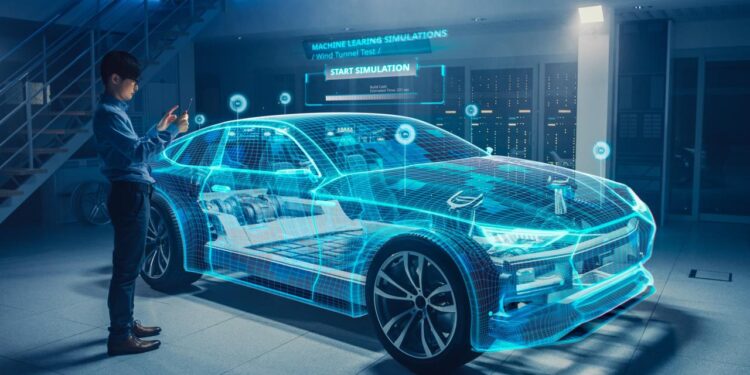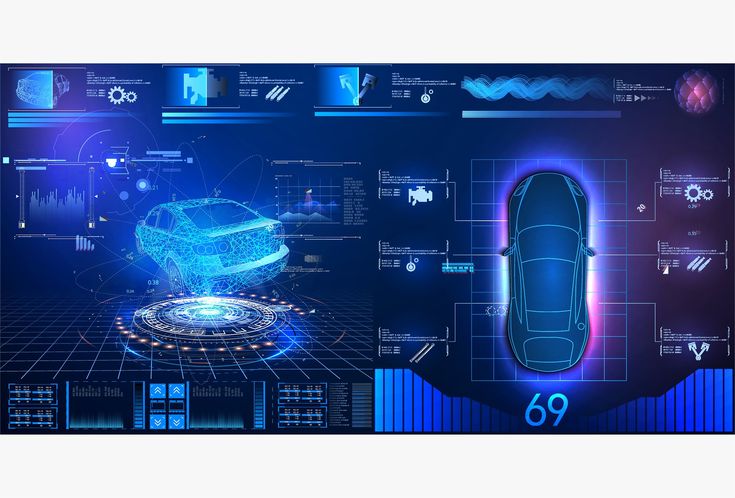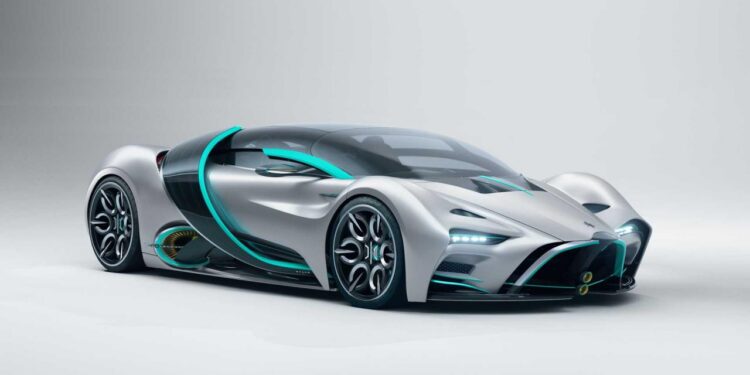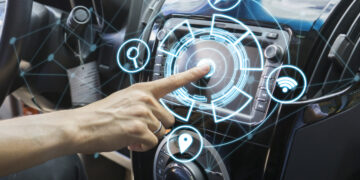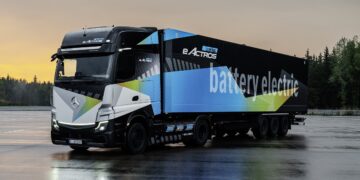The automotive sector is experiencing an unprecedented evolution as digital transformation reshapes every facet of the industry. Once dominated by mechanical engineering and traditional production methods, the auto world now embraces state-of-the-art digital technologies that revolutionize manufacturing, enhance customer experience, and redefine vehicle performance. This article delves deep into the digital transformation trends within the automotive industry, exploring how innovations such as artificial intelligence, the Internet of Things (IoT), autonomous driving, and data analytics are driving the future of mobility.
As legacy automakers and new entrants alike pivot toward digital strategies, the industry is witnessing a paradigm shift that is not only improving operational efficiency but also delivering smarter, safer, and more sustainable vehicles. In the following sections, we will analyze the trends that have become synonymous with digital transformation in the auto industry, evaluate the challenges and opportunities, and outline what the future might hold.
The Digital Shift in the Auto Industry
Digital transformation in the auto industry is characterized by the integration of advanced digital technologies into every aspect of operations. This transformation is not limited to vehicle design and manufacturing; it extends to supply chain management, customer engagement, aftersales services, and even the driving experience.
A. From Mechanical to Digital
For decades, the auto industry relied on well-established mechanical processes and assembly lines. Today, digital solutions are revolutionizing these processes by:
A. Enhancing Production Efficiency: Automation, robotics, and real-time data monitoring help streamline production lines.
B. Optimizing Supply Chains: Advanced logistics software and IoT sensors provide real-time tracking of parts and inventory.
C. Improving Quality Control: Machine learning algorithms detect anomalies and defects faster than traditional methods.
B. Consumer-Centric Innovations
As consumer expectations evolve, automotive companies are leveraging digital tools to deliver personalized experiences. These innovations include connected car features, smart infotainment systems, and mobile applications that allow drivers to interact with their vehicles remotely. Digital transformation helps manufacturers gain valuable insights into consumer behavior, which in turn drives more tailored product offerings.
Key Digital Transformation Trends in the Automotive Sector
A. Smart Manufacturing and Industry 4.0
The concept of Industry 4.0 has fundamentally transformed manufacturing processes within the auto industry. Smart factories use interconnected machines and systems to optimize production schedules and reduce downtime. Key components include:
A. Automation and Robotics: Robots handle repetitive tasks with precision, increasing production speed and reducing human error.
B. Digital Twins: Virtual replicas of physical systems allow engineers to simulate, test, and optimize production processes before implementation.
C. Predictive Maintenance: Sensors and data analytics predict machine failures, preventing unexpected downtimes and saving costs.
The integration of these technologies ensures higher productivity and quality, paving the way for a more agile manufacturing environment.
B. Artificial Intelligence and Machine Learning
AI and machine learning are at the forefront of digital innovation in the auto industry. These technologies are utilized in multiple areas, from vehicle design to consumer interactions. They provide benefits such as:
A. Enhanced Design Capabilities: AI-driven design tools optimize aerodynamics, structural integrity, and performance.
B. Personalized Customer Experiences: Machine learning algorithms analyze customer data to tailor marketing strategies and vehicle recommendations.
C. Smart Vehicle Systems: AI assists in developing advanced driver-assistance systems (ADAS) that improve road safety and ease of driving.
C. Internet of Things (IoT) and Connected Vehicles
IoT is bridging the gap between vehicles and their surroundings. By embedding sensors and connectivity solutions in cars, manufacturers can offer features that go beyond traditional driving experiences. Connected vehicles offer:
A. Real-Time Data Exchange: Vehicles communicate with infrastructure, other cars, and mobile devices, enabling dynamic route adjustments and hazard warnings.
B. Enhanced Safety Features: IoT-based systems monitor vehicle performance and driver behavior, alerting to potential issues before they escalate.
C. Remote Diagnostics and Maintenance: Continuous monitoring allows for early detection of mechanical problems, reducing downtime and improving reliability.
D. Autonomous Driving and Advanced Driver-Assistance Systems
The dream of self-driving cars is gradually becoming a reality. Advances in sensors, computing power, and algorithm development are propelling autonomous driving technologies forward. Critical aspects include:
A. Levels of Autonomy: From partial automation (driver assistance) to full autonomy, each level offers incremental benefits in safety and convenience.
B. Sensor Fusion: Combining data from radar, Lidar, cameras, and ultrasonic sensors enables precise environmental mapping.
C. Regulatory Developments: Governments worldwide are drafting policies to support the safe deployment of autonomous vehicles on public roads.
E. Electric Vehicles and Sustainable Technologies
Electric vehicles (EVs) are a cornerstone of digital transformation in the auto industry. With environmental concerns at the forefront, automakers are transitioning from internal combustion engines to cleaner energy solutions. The digital revolution supports EV development in various ways:
A. Battery Management Systems: Advanced algorithms optimize charging cycles, extend battery life, and improve energy efficiency.
B. Smart Charging Infrastructure: IoT-enabled charging stations provide real-time updates on availability and maintenance, making EV adoption more convenient.
C. Integrated Renewable Energy Solutions: Automakers are exploring solar and other renewable energy integrations to power EVs, reducing carbon footprints.
F. Big Data and Predictive Analytics
The wealth of data generated by connected vehicles and smart factories is a goldmine for the auto industry. Big data analytics help companies make informed decisions by:
A. Improving Operational Efficiency: Data-driven insights lead to smarter production schedules and reduced operational costs.
B. Enhancing Customer Insights: Analyzing driving patterns and consumer behavior allows for better product customization and targeted marketing.
C. Optimizing Maintenance: Predictive analytics forecast potential breakdowns and facilitate timely maintenance, enhancing vehicle longevity.
Transforming the Customer Experience
Digital transformation is not only about manufacturing and technology—it also revolutionizes how customers interact with vehicles and automakers. Enhanced digital interfaces and services create a more engaging, efficient, and personalized customer journey.
A. Digital Showrooms and Virtual Reality
Digital showrooms and VR technology offer immersive experiences that allow customers to explore vehicle features without visiting a physical dealership. Benefits include:
A. Virtual Test Drives: Customers can experience the performance and aesthetics of vehicles in a simulated environment.
B. Interactive Customization: Potential buyers can personalize vehicle features in real time, visualizing changes instantly.
C. Global Accessibility: Digital platforms allow customers worldwide to access product information and offers, breaking geographical barriers.
B. Mobile Applications and Connected Services
Mobile apps have become a central component of the modern automotive experience. These applications provide functionalities that range from vehicle diagnostics to remote control of car features. Key features include:
A. Remote Start and Climate Control: Drivers can preheat or cool their vehicles from a distance, ensuring comfort upon arrival.
B. Service Scheduling: Integrated service booking systems notify drivers when maintenance is due, based on real-time data.
C. Enhanced Navigation: Apps offer real-time traffic updates, route optimization, and location-based services that improve driving efficiency.
C. Personalized Marketing and Customer Engagement
Digital transformation enables automakers to collect and analyze customer data, leading to highly targeted marketing efforts. This personalized approach results in:
A. Customized Offers: Tailored promotions and financing options based on customer preferences and driving history.
B. Loyalty Programs: Digital platforms support rewards and referral programs that enhance customer retention.
C. Feedback Integration: Real-time feedback mechanisms help manufacturers and dealers continually improve their offerings.
Overcoming Challenges in Digital Transformation
While digital transformation offers numerous benefits, the auto industry faces several challenges during this transition. Addressing these issues is crucial for successful implementation.
A. Cybersecurity Concerns
As vehicles become more connected, the risk of cyberattacks increases. Automakers must ensure that robust cybersecurity measures are in place to protect sensitive data and maintain consumer trust. Strategies include:
A. Advanced Encryption: Protecting data transmitted between vehicles and infrastructure.
B. Regular Software Updates: Ensuring that all systems are patched against known vulnerabilities.
C. Comprehensive Security Protocols: Implementing multi-layered defense systems to counter potential threats.
B. Integration of Legacy Systems
Many traditional automotive manufacturers face the challenge of integrating new digital technologies with legacy systems. This integration requires significant investment and careful planning. Solutions involve:
A. Hybrid Approaches: Gradually integrating digital systems while maintaining essential legacy functions.
B. Cloud-Based Solutions: Leveraging cloud technology to bridge the gap between old and new systems.
C. Collaborative Partnerships: Working with tech firms and startups to streamline the integration process.
C. Regulatory and Compliance Issues
Digital transformation in the auto industry is subject to strict regulatory oversight. Issues such as data privacy, safety standards, and environmental regulations must be meticulously managed. Key considerations include:
A. Adherence to Global Standards: Ensuring that digital innovations meet international safety and quality benchmarks.
B. Transparent Reporting: Maintaining clear and open communication with regulatory bodies.
C. Proactive Compliance Strategies: Staying ahead of legislative changes to minimize disruptions.
D. Workforce Adaptation and Skill Gaps
The shift toward digital technologies necessitates a workforce that is proficient in new digital skills. Automakers must invest in training and development to bridge the skills gap and ensure employees are equipped to handle advanced systems. This involves:
A. Ongoing Training Programs: Regular workshops and certification courses in digital technologies.
B. Collaborative Learning Environments: Encouraging knowledge sharing and cross-functional teamwork.
C. Recruitment of Tech Talent: Attracting professionals with expertise in AI, data analytics, and IoT.
Strategies for Successful Digital Transformation
To thrive in a digital landscape, automotive companies need to adopt strategic approaches that balance innovation with operational excellence. Some effective strategies include:
A. Embrace a Customer-Centric Approach
Digital transformation should ultimately enhance the customer experience. Companies must focus on understanding and meeting customer needs by leveraging data and advanced technologies. This means:
A. Personalizing Interactions: Using customer insights to tailor products and services.
B. Enhancing Communication Channels: Implementing digital platforms that facilitate real-time engagement.
C. Continuously Innovating: Regularly updating digital offerings based on evolving consumer trends.
B. Invest in Scalable Technologies
The dynamic nature of the auto industry requires scalable solutions that can grow with the business. Investments should focus on:
A. Cloud Computing: Leveraging cloud-based infrastructure for flexibility and cost-efficiency.
B. Modular Platforms: Implementing systems that can be easily upgraded as new technologies emerge.
C. Interoperability: Ensuring that various digital tools and systems can work together seamlessly.
C. Foster Collaborative Ecosystems
Collaboration between traditional manufacturers, tech startups, and research institutions is essential for driving innovation. A collaborative approach can accelerate digital transformation by:
A. Sharing Knowledge: Exchanging insights and best practices between industry players.
B. Joint Ventures: Partnering on projects that leverage complementary strengths.
C. Innovation Hubs: Establishing centers of excellence that focus on emerging digital technologies.
D. Prioritize Sustainability and Efficiency
Digital transformation is not only about technological advancements but also about creating a more sustainable and efficient automotive industry. Companies can achieve this by:
A. Reducing Waste: Utilizing digital tools to optimize production and minimize resource consumption.
B. Improving Energy Efficiency: Investing in smart energy management systems across manufacturing plants.
C. Promoting Green Technologies: Accelerating the adoption of electric and hybrid vehicles.
Case Studies and Success Stories
To illustrate the profound impact of digital transformation, consider these examples from the automotive industry:
A. Global Automaker Reinvents Production
A leading global car manufacturer recently overhauled its production line using smart manufacturing principles. By integrating digital twins and predictive maintenance systems, the company reduced downtime by over 40% and improved overall production efficiency. This transformation not only streamlined operations but also set new benchmarks for quality control.
B. Tech-Forward Startup Disrupts the Market
A relatively new entrant in the automotive space leveraged digital technologies to design a fully connected, electric vehicle. With an emphasis on user-centric design and advanced infotainment systems, the startup attracted significant investor attention and quickly scaled its operations, proving that digital innovation is not solely the realm of established giants.
C. Collaborative Innovation in Autonomous Driving
Several major automakers have formed consortia with tech companies and academic institutions to advance autonomous driving technologies. These collaborations focus on developing AI-powered driver assistance systems and sensor fusion technologies that are expected to revolutionize road safety in the coming years.
The Road Ahead: Future Trends
As digital transformation accelerates, the future of the auto industry promises even greater innovations. Emerging trends that could define the next phase of digital transformation include:
A. Integration of 5G Connectivity
With the rollout of 5G networks, vehicles will experience unprecedented data transfer speeds, enabling real-time communication between cars, infrastructure, and devices. This will enhance autonomous driving capabilities, improve navigation systems, and support advanced safety features.
B. Evolution of Blockchain Applications
Blockchain technology is poised to play a significant role in securing vehicle data, streamlining supply chains, and enhancing transparency. By providing a decentralized and tamper-proof record of transactions, blockchain can help address cybersecurity challenges and ensure data integrity across the automotive ecosystem.
C. Enhanced Human-Machine Interfaces (HMI)
The way drivers interact with their vehicles is set to change dramatically. Future HMIs will incorporate augmented reality (AR) and virtual reality (VR) to display critical information such as navigation, hazard alerts, and performance metrics directly onto the windshield or through wearable devices. This seamless integration of digital information and the driving experience will enhance safety and convenience.
D. Customization Through Big Data
As more data becomes available, automakers will use advanced analytics to create highly customized vehicles that meet individual customer preferences. From personalized in-car settings to tailored maintenance schedules, big data will enable a level of customization that was previously unimaginable.
E. Expansion of Shared Mobility Platforms
Digital transformation is also influencing the way we think about vehicle ownership. Shared mobility platforms, supported by real-time data and sophisticated algorithms, are making it easier for consumers to access vehicles on-demand. This trend is likely to grow, reducing the need for personal vehicle ownership and contributing to more sustainable urban mobility solutions.
Conclusion
The auto industry’s embrace of digital transformation is reshaping the landscape of mobility, manufacturing, and customer engagement. From smart factories and AI-driven design to connected vehicles and autonomous driving, every aspect of the industry is being reimagined for the digital age. While challenges such as cybersecurity, regulatory compliance, and workforce adaptation remain, the benefits of digital transformation far outweigh the obstacles.
By investing in scalable technologies, fostering collaborative ecosystems, and prioritizing customer-centric innovations, automotive companies can not only meet the demands of today’s market but also anticipate the needs of tomorrow’s consumers. As the industry continues its digital evolution, the future of mobility promises enhanced safety, increased efficiency, and a more sustainable approach to transportation.
In conclusion, digital transformation is not a temporary trend but a fundamental shift that is driving the auto industry toward a smarter, more connected future. Embracing these changes will enable companies to remain competitive in a rapidly evolving market while delivering unparalleled value to consumers.

